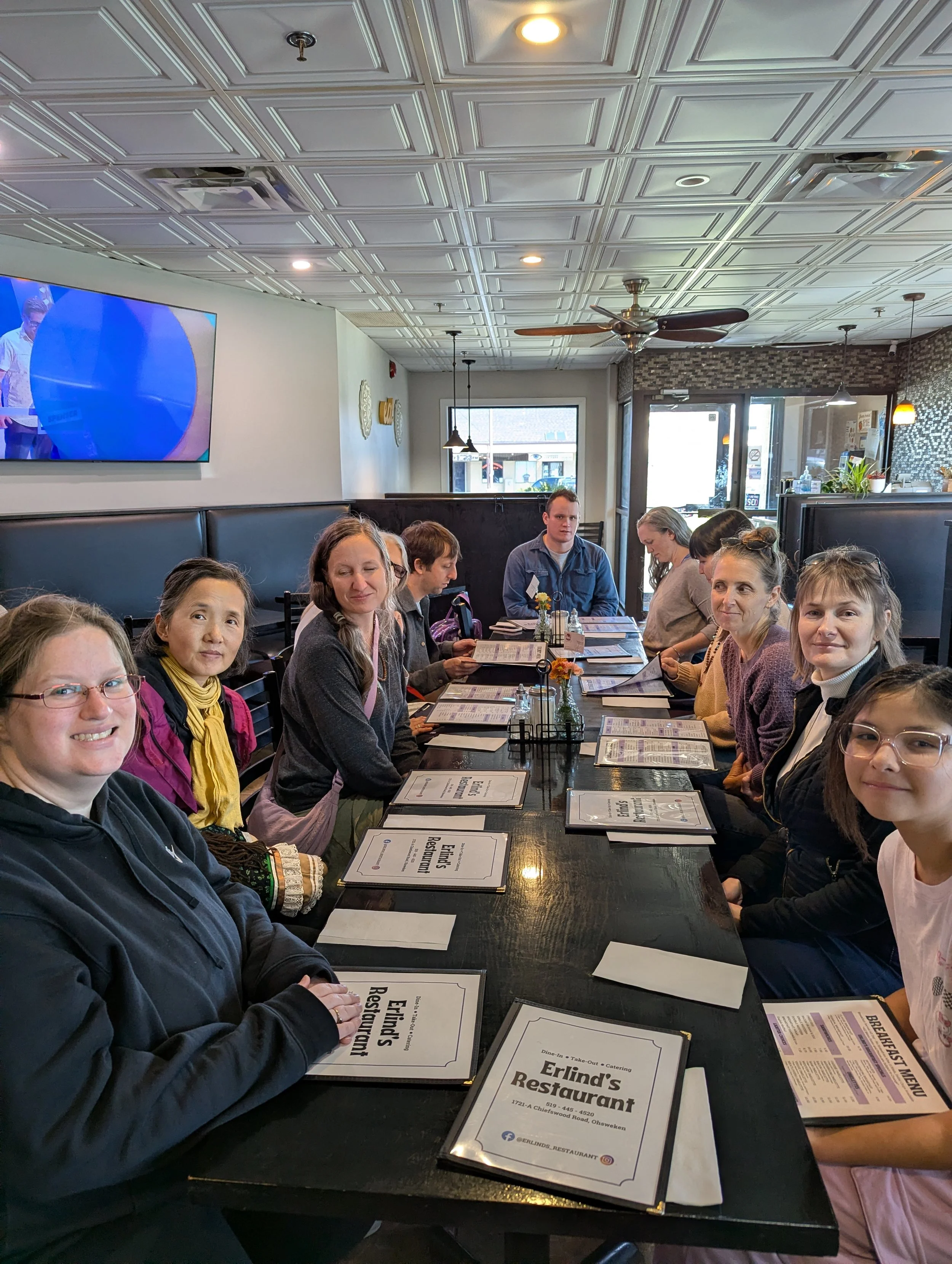Weaving Ribbons: A Day of Connection and Discovery
Reflecting on our Fall Gathering for Waldorf Educators
On a beautiful fall day, twelve Waldorf educators—six from the Waldorf Academy (including one parent) and six from the Toronto Waldorf School—gathered for our Weaving Ribbons Fall Gathering. The day was designed as both a learning journey and an exploration of place, deepening our understanding of the historical and ongoing relationships between Indigenous and non-Indigenous peoples.
Beginning in a Good Way
Our day began at the Mohawk Village Memorial Park, where I welcomed participants to our territory and acknowledged their journey to our community and into the day. Together, we opened in a good way through story, song, and dance, setting the tone for a day rooted in respect, gratitude, and shared purpose.
From there, we visited the Woodland Cultural Centre (visit their education department), where participants toured the museum and watched the orientation video for the Mohawk Institute Residential School (book an in person or virtual tour). Though we did not go inside the building, some took time to read the plaque outside, and we gathered for a group photo on the steps—a quiet but meaningful moment at a place that continues to hold deep history and memory.
Tracing History Along the Grand River
Our next stop was Her Majesty’s Royal Chapel of the Mohawks, a National Historic Site and one of three Royal Chapels in Canada. This space invited reflection on the complex relationship between the Crown and the Haudenosaunee people—and on how those ties continue to shape our shared histories today.
Although Everything Cornhusk and Sapling and Flint were closed during our visit, we spoke about the remarkable artistry of Elizabeth Doxtator, whose work tells powerful stories of Haudenosaunee worldviews and resilience. A few participants also explored the Life Sustainers and Go Tribal stores nearby, engaging with contemporary Indigenous creativity and entrepreneurship.
Sharing Food and Conversation
We gathered for lunch at Erlind’s Restaurant, where many participants enjoyed traditional corn soup for the first time. Sharing this meal together offered not only nourishment, but also a connection to Haudenosaunee foodways.
Stories in Stone and Memory
My daughter loves to help out with our work whenever she can.
The afternoon led us to several important community landmarks, including the Tom Longboat Monument, which honours the celebrated Onondaga runner, and the Haldimand Proclamation Monument outside the community hall—a reminder of the promises made and the land that continues to sustain these stories. (Learn more about an initiative to Protect the Tract.) Stops at Veterans Park, the Old Council House, and the Six Nations Public Library offered glimpses into community leadership, service, and the ways history lives on through place.
Mural at the back of the Six Nations Community Hall and Dajoh Youth and Elders Centre
After some browsing and shopping at Iroqrafts, a few participants departed for home, while others caught the last moments of the Fall Festival, enjoying the sounds and colours of community life before taking a quiet moment by the river to reflect on the day.
Reconciliation is not a single act—it is a practice of relationship: walking together, asking questions, and staying curious.
Closing Reflections
The Weaving Ribbons Gathering offered time to learn, to see, and to listen—to the land, to history, and to one another. Through shared experiences, we continue to strengthen the connections between Waldorf educators and Haudenosaunee territories and communities on which we live and teach.
This day reminded us that reconciliation grows from relationships—woven one ribbon, one story, and one shared step at a time.
If you would like to have a day like this with your school community, Six Nations Tourism offers many different packages that include even more places we didn’t get to due time, like Chiefswood National Historic Site - Birthplace of E. Pauline Johnson and Kayanase (an ecological restoration and native plant and seed business) where there is a newly opened replica of an historical longhouse (the linked article mentions that the longhouse was burned down however it has been reconstructed and recently re-opened).










